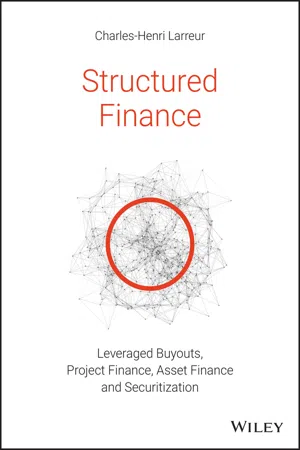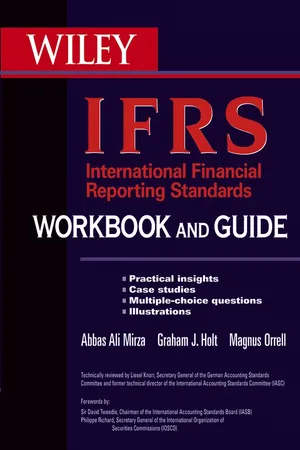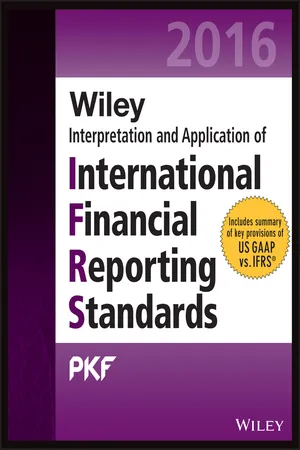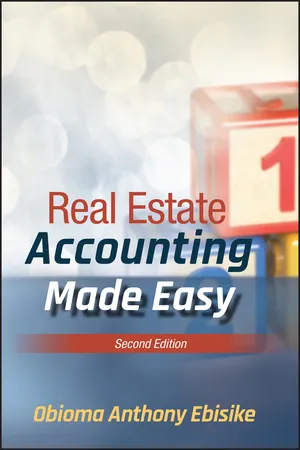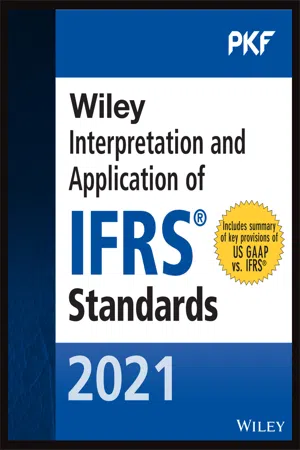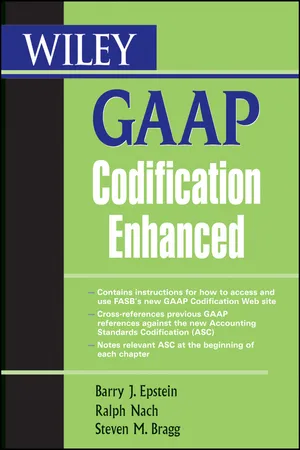Business
Operating Leases
Operating leases are a type of lease agreement where a company rents an asset from a lessor for a specific period, typically shorter than the asset's useful life. Unlike capital leases, operating leases do not transfer ownership of the asset to the lessee at the end of the lease term. Instead, the lessor retains ownership and the lessee returns the asset.
Written by Perlego with AI-assistance
Related key terms
Related key terms
1 of 4
Related key terms
1 of 3
8 Key excerpts on "Operating Leases"
- eBook - ePub
- International Monetary Fund(Author)
- 2009(Publication Date)
- INTERNATIONAL MONETARY FUND(Publisher)
An operating lease is one where the legal owner is also the economic owner and accepts the operating risks and receives the economic benefits from the asset by using it in a productive activity. One indicator of an operating lease is that it is the responsibility of the legal owner to provide any necessary repair and maintenance of the asset. Under an operating lease the asset remains on the balance sheet of the lessor.17.302 The payments made under an operating lease are referred to as rentals and are recorded as payments for a service. The character of Operating Leases may most easily be described in relation to equipment since Operating Leases often concern vehicles, cranes, drills etc. In general, though, any sort of non-financial asset, an intellectual property product or a non-financial asset may be subject to an operating lease. The service provided by the lessor goes beyond the mere provision of the asset. It includes other elements such as convenience and security, which can be important from the user’s point of view. In the case of equipment, the lessor, or owner of the equipment, normally maintains a stock of equipment in good working order that can be hired on demand or at short notice. The lessor must normally be a specialist in the operation of the equipment, a factor that may be important in the case of highly complicated equipment, such as computers, where the lessee and his employees may not have the necessary expertise or facilities to service the equipment properly themselves. The lessor may also undertake to replace the equipment in the event of a serious or prolonged breakdown. In the case of a building, the lessor is responsible for the structural integrity of the building, so would be responsible in the case of damage due to a natural disaster, for example, and is usually responsible for ensuring that elevators, heating and ventilation systems function adequately.17.303 Operating leasing developed originally to meet the needs of users who require certain types of equipment only intermittently. Many Operating Leases are still for short periods though the lessee may renew the rental when the period expires and the same user may hire the same piece of equipment on several occasions. However, with the evolution of increasingly complicated types of machinery, especially in the electronics field, the servicing and backup facilities provided by a lessor are important factors that may influence a user to rent. Other factors that may persuade users to rent over long periods rather than purchase are the consequences for the enterprise’s balance sheet, cash flow or tax liability. - eBook - ePub
Structured Finance
Leveraged Buyouts, Project Finance, Asset Finance and Securitization
- Charles-Henri Larreur(Author)
- 2021(Publication Date)
- Wiley(Publisher)
In the past, it was sometimes argued that one of the reasons why airlines leased aircraft was that accounting rules allowed them not to disclose the full impact of leases on the balance sheet and the income statement. An operating lease, in effect, was an off‐balance sheet transaction and lacked full transparency.This argument was actually never very strong. Analysts had always found ways to account for the leases as debt in their analyses. There are two aspects to leases. Rentals are legally operating expenses (this is a leasing contract, not a loan) yet are also capex from an economic point of view (they are meant to pay for a long‐term asset). For this reason, rating agencies and equity analysts have always readjusted airlines' level of indebtedness by considering operating lease rentals as debt‐like obligations.- Rating agencies such as S&P and Moody's treat operating lease obligations of rated airlines as debt. There are nuances between the approaches of the two agencies but the underlying methodology is similar: the present value of future lease payments is added to the total net debt of airlines. This methodology is widely used in the sector and is applied by bankers to non‐rated airlines.
- Equity analysts are not fooled by the legal nature of leasing either. They calculate the operating profitability of airlines using the concept of EBITDAR (Earnings Before Interest, Taxes, Depreciation, Amortization and Rentals). Subtracting rentals from the traditional EBITDA metric excludes de facto rentals from an airline's operating expenses. It also means that rentals are considered a capex.
And since 2019, this argument is completely invalid. The US Accounting Standards Board and the International Standards Board issued ASC 842 and IFRS 16 respectively, which require that companies report their Operating Leases as both assets and liabilities on their balance sheets. These rules had to be implemented as of January 2019. In the case of ASC 842, specifically, publicly traded companies had to implement the new rules as of January 2019, while private companies must implement the rules in 2021. The new rules, broadly, require that leases be recorded as right of use assets - eBook - ePub
International Financial Reporting Standards (IFRS) Workbook and Guide
Practical insights, Case studies, Multiple-choice questions, Illustrations
- Abbas A. Mirza, Graham Holt, Magnus Orrell(Authors)
- 2010(Publication Date)
- Wiley(Publisher)
4.4 It is evident from these descriptions that a large degree of judgment has to be exercised in classifying leases; many lease agreements are likely to demonstrate only a few of the situations listed, some of which are more persuasive than others. In all cases, the substance of the transaction needs to be properly analyzed and understood. Emphasis is placed on the risks that the lessor retains more than the benefits of ownership of the asset. If there is little or no related risk, then the agreement is likely to be a finance lease. If the lessor suffers the risk associated with a movement in the market price of the asset or the use of the asset, then the lease is usually an operating lease.4.5 The purpose of the lease arrangement may help the classification. If there is an option to cancel, and the lessee is likely to exercise such an option, then the lease is likely to be an operating lease.4.6 Classifications of leases are to be made at the inception of the lease. The inception of a lease is the earlier of the agreement date and the date of the commitment by the parties to the principal provisions of the lease. If the lease terms are subsequently altered to such a degree that the lease would have had a different classification at it inception, a new lease is deemed to have been entered into. Changes in estimates such as the residual value of an asset are not deemed to be a change in classification.4.7 Leases of land, if title is not transferred, are classified as Operating Leases, as land has an indefinite economic life and a significant reward of land ownership is its outright ownership and title to its realizable value. If the title to the land is not expected to pass to the lessee, then the risks and rewards of ownership have not substantially passed, and an operating lease is created for the land. Leases of land and buildings need to be treated separately, as often the land lease is an operating lease and the building lease, a finance lease.4.8 - eBook - ePub
- Bruce Mackenzie, Danie Coetsee, Tapiwa Njikizana, Raymond Chamboko(Authors)
- 2011(Publication Date)
- Wiley(Publisher)
16LEASESPERSPECTIVE AND ISSUES
Leasing has long been a popular financing option for the acquisition of business property. During the past few decades, however, the business of leasing has experienced staggering growth, and much of this volume is reported in the statements of financial position. The tremendous popularity of leasing is quite understandable, as it offers great flexibility, often coupled with a range of economic advantages over ownership. Thus, with leasing, a lessee (borrower) is typically able to obtain 100% financing, whereas under a traditional credit purchase arrangement the buyer would generally have to make an initial equity investment. In many jurisdictions, a leasing arrangement offers tax benefits compared to the purchase option. The lessee is protected to an extent from the risk of obsolescence, although the lease terms will vary based on the extent to which the lessor bears this risk. For the lessor, there will be a regular stream of lease payments, which include interest that often will be at rates above commercial lending rates, and, at the end of the lease term, usually some residual value.The accounting for lease transactions involves a number of complexities, which derive partly from the range of alternative structures that are available to the parties. For example, in many cases leases can be configured to allow manipulation of the tax benefits, with other features such as lease term and implied interest rate adjusted to achieve the intended overall economics of the arrangement. Leases can be used to transfer ownership of the leased asset, and they can be used to transfer some or all of the risks normally associated with ownership. The financial reporting challenge is to have the economic substance of the transaction dictate the accounting treatment.The accounting for lease transactions is one of the best examples of the application of the principle of substance over form, as set forth in the IASB’s Framework - eBook - ePub
Wiley IFRS 2016
Interpretation and Application of International Financial Reporting Standards
- (Author)
- 2016(Publication Date)
- Wiley(Publisher)
Leasing has long been a popular financing option for the acquisition of business property. During the past few decades, however, the business of leasing has experienced staggering growth, and much of this volume is reported in the statements of financial position. The tremendous popularity of leasing is quite understandable, as it offers great flexibility, often coupled with a range of economic advantages over ownership. Thus, with leasing, a lessee (borrower) is typically able to obtain 100% financing, whereas under a traditional credit purchase arrangement the buyer would generally have to make an initial equity investment. In many jurisdictions, a leasing arrangement offers tax benefits compared to the purchase option. The lessee is protected to an extent from the risk of obsolescence, although the lease terms will vary based on the extent to which the lessor bears this risk. For the lessor, there will be a regular stream of lease payments, which include interest that often will be at rates above commercial lending rates, and, at the end of the lease term, usually some residual value.The accounting for lease transactions involves a number of complexities, which derive partly from the range of alternative structures that are available to the parties. For example, in many cases leases can be configured to allow manipulation of the tax benefits, with other features such as lease term and implied interest rate adjusted to achieve the intended overall economics of the arrangement. Leases can be used to transfer ownership of the leased asset, and they can be used to transfer some or all of the risks normally associated with ownership. The financial reporting challenge is to have the economic substance of the transaction dictate the accounting treatment.The accounting for lease transactions is one of the best examples of the application of the principle of substance over form, as set forth in the IASB's Framework - eBook - ePub
- Obioma A. Ebisike(Author)
- 2019(Publication Date)
- Wiley(Publisher)
In general, property owners derive revenues from multiple channels. Some of these include base rent, operating expenses recoveries, real estate taxes recoveries, bill-back profits, antenna space rental, operation of vending machines, among others. In most cases, agreements called leases govern the relationships between the landlord and tenants. Therefore, a lease can be defined as an agreement between the landlord and tenant for the rental of the landlord's premises to the tenant for specified terms and conditions.The lease can be short term or long term. Short-term leases are normally for one year or less; long-term leases are usually for more than one year. Most residential leases tend to be short term. Commercial office leases tend to be long term due to the need to stabilize the revenue stream of the property and also due to the high cost of finalizing a lease, which normally includes significant costs on broker's commissions, attorney fees, and document preparation, including time involved in the potential tenants' viewing the premises and negotiating the lease. Typically, leasing costs on commercial space are paid by the landlord; however, the attorney hired by the tenant is paid by the tenant. A typical long-term lease could range from 5 years to 15 years, depending on the market.TYPES OF Operating Leases
In practice, there are multiple types of leasing arrangements between landlords and tenants. Four of the most common arrangements include:- Gross lease
- Net lease
- Fixed base lease
- Base-year lease
Gross Lease
A gross lease is a type of lease arrangement in which the tenant pays a specified amount that covers the rental of the premises, including the operating expenses and real estate taxes of the property. In this type of lease, the tenant's future total rental payments are known from day one, and the landlord bears the risk of future operating expenses and real estate tax increases. Some tenants prefer this type of lease arrangement because it helps them manage the risk of future cost increases and planning. - (Author)
- 2021(Publication Date)
- Wiley(Publisher)
22 LEASES- Introduction
- Definitions of Terms
- Classification of Leases
- Classification of Leases—Lessee
- Identifying a lease
- Lease term
- Classification of Leases—Lessor
- Different Types of Finance Leases
- Recognition and Measurement
- Accounting for Leases—Lessee
- Initial measurement
- Accounting for Leases—Lessor
- Operating Leases
- Finance leases
- Sales‐type leases
- Direct financing leases
- Lease Modifications
- Disclosure Requirements
- Lessee Disclosures
- Lessor Disclosures
- Examples of Financial Statement Disclosures
- US GAAP Comparison
INTRODUCTION
Leasing has long been a popular financing option for the acquisition of business property. During the past few decades, however, the business of leasing has experienced staggering growth, and much of this volume is reported in the statements of financial position. The tremendous popularity of leasing is quite understandable, as it offers great flexibility, often coupled with a range of economic advantages over ownership. Thus, with leasing, a lessee (borrower) is typically able to obtain 100% financing, whereas under a traditional credit purchase arrangement the buyer would generally have to make an initial equity investment. In many jurisdictions, a leasing arrangement offers tax benefits compared to the purchase option. The lessee is protected to an extent from the risk of obsolescence, although the lease terms will vary based on the extent to which the lessor bears this risk. For the lessor, there will be a regular stream of lease payments, which include interests that often will be at rates above commercial lending rates, and, at the end of the lease term, usually some residual value.The IASB issued a new leases standard which supersedes the previous leases standard. The previous leases standard, IAS 17, focused on identifying when a lease is economically similar to purchasing the asset being leased. When a lease was determined to be economically similar to the purchase of the asset being leased, the lease was classified as a finance lease and reported on the balance sheet. An asset was recognised to bring into account the underlying asset effectively purchased, together with the corresponding liability of the lease. All other leases were classified as Operating Leases and not reported on the company's balance sheet, i.e., the expense was reported in the income statement as and when incurred.- eBook - ePub
- Barry J. Epstein, Ralph Nach, Steven M. Bragg(Authors)
- 2009(Publication Date)
- Wiley(Publisher)
This type is mentioned separately because it receives a different accounting treatment by the lessor. A leveraged lease meets all the definitional criteria of a direct financing lease, but differs because it involves at least three parties: a lessee, a long-term creditor, and a lessor (commonly referred to as the equity participant). Other characteristics of a leveraged lease are as follows: 1. The financing provided by the long-term creditor must be without recourse to the general credit of the lessor, although the creditor may hold recourse with respect to the leased property. The amount of the financing must provide the lessor with substantial “leverage” in the transaction. 2. The lessor’s net investment declines during the early years and rises during the later years of the lease term before its elimination. Lessee Accounting As discussed in the preceding section, there are two classifications that apply to a lease transaction from the standpoint of the lessee, operating or capital. Operating Leases. The accounting treatment accorded an operating lease is relatively simple; the rental payments are charged to expense as the payments are made or become payable. This assumes that the lease payments are being made on a straight-line basis (i.e., an equal payment per period over the lease term). If the lease agreement calls for either an alternative payment schedule or a scheduled rent increase over the lease term, per ASC 840-20-25, the lease expense is recognized on a straight-line basis over the lease term unless another systematic and rational basis is a better representation of the actual physical usage of the leased property. In addition, the lessor may grant various incentives to the lessee during the lease term such as a rent holiday, or allowances to fund leasehold improvements. Incentives paid to or incurred on behalf of the lessee by the lessor are an inseparable part of the lease agreement
Index pages curate the most relevant extracts from our library of academic textbooks. They’ve been created using an in-house natural language model (NLM), each adding context and meaning to key research topics.
Explore more topic indexes
Explore more topic indexes
1 of 6
Explore more topic indexes
1 of 4

